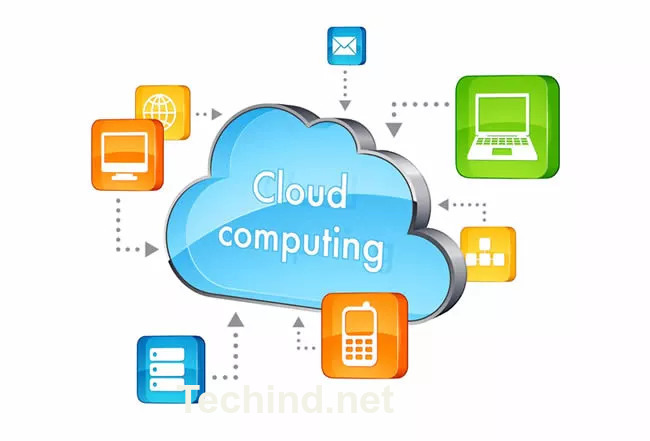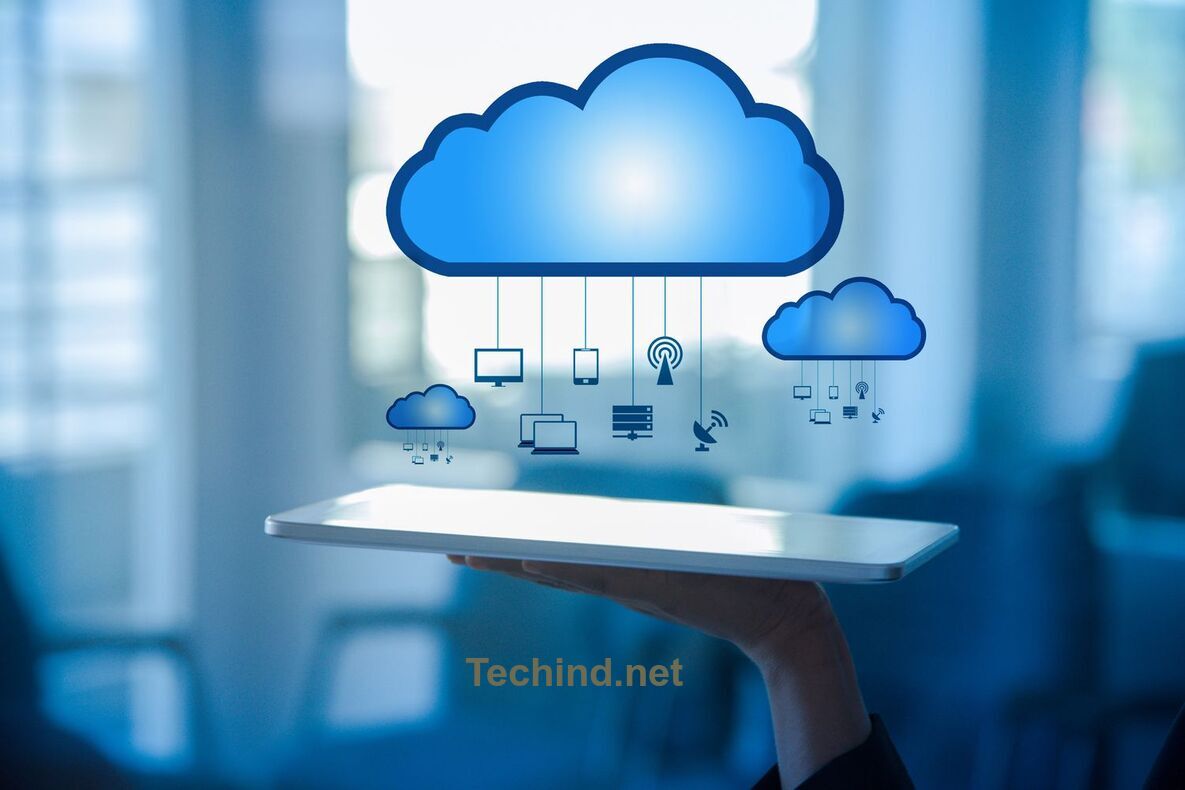
Cloud computing is the delivery of computing services, including servers, storage, databases, networking, software, analytics, and intelligence, over the Internet (“the cloud”) to offer improved flexibility, scalability, and reduced infrastructure costs. In cloud computing, users can access data and applications from anywhere with an internet connection.
The cloud’s scalability and flexibility make it a popular choice for businesses that require a cost-effective and easily scalable IT infrastructure. Additionally, cloud computing eliminates the need for on-premises hardware and software, reducing maintenance and upgrade costs. Overall, cloud computing has revolutionized the way businesses operate by providing on-demand access to a wide range of IT resources.
History of cloud computing?
Cloud computing has become a ubiquitous term in the IT industry. It refers to the delivery of computing services, including servers, storage, databases, networking, software, analytics, and intelligence, over the internet. But the history of cloud computing dates back to the early days of the internet.
In the 1960s, the concept of time-sharing was developed, which allowed multiple users to access a single computer simultaneously. This concept was the precursor to cloud computing, as it allowed resources to be shared among multiple users.
In the 1990s, the term cloud computing was coined to describe the process of delivering computing services over the internet. However, it was not until the early 2000s that cloud computing started gaining traction, thanks to the availability of high-speed internet and advancements in virtualization and automation technologies.
Amazon Web Services (AWS) was one of the first companies to offer cloud computing services in 2006, followed by Microsoft Azure in 2010 and Google Cloud Platform in 2011. Today, cloud computing has become the norm for many businesses, as it offers scalability, flexibility, cost savings, and ease of management.
The history of cloud computing is a long and fascinating one. From the early days of time-sharing to the modern-day cloud computing services, the technology has come a long way. As technology continues to evolve, it is safe to say that cloud computing will play an even more significant role in the future.
How does cloud computing work
Cloud computing is a technology that allows users to access computing resources over the internet, rather than having to own and manage their own infrastructure. It works by providing virtualized resources, including servers, storage, and applications, that can be accessed remotely by users.
The cloud computing model is based on the concept of shared resources. Multiple users can access the same computing resources at the same time, which allows for better utilization of resources and more efficient use of hardware. These resources are typically provided by a third-party provider, who manages and maintains the infrastructure.
There are three main types of cloud computing: public, private, and hybrid. Public clouds are accessible to anyone over the internet and are typically managed by third-party providers. Private clouds, on the other hand, are dedicated to a single organization and are managed by that organization’s IT department. Hybrid clouds are a combination of public and private clouds, and allow organizations to use a mix of resources depending on their needs.
Cloud computing works by providing users with a variety of services, including storage, computing power, and software applications. These services are accessed over the internet and can be customized to meet the specific needs of each user. The cloud provider is responsible for maintaining the infrastructure and ensuring that the services are available and reliable.
Cloud computing is a technology that provides virtualized resources over the internet. It allows users to access computing resources without having to own and manage their own infrastructure, and is based on the concept of shared resources. There are three main types of cloud computing: public, private, and hybrid, and users can access a variety of services including storage, computing power, and software applications.
Cloud Computing Services
Cloud computing services refer to the on-demand delivery of computing resources over the internet. There are several cloud computing services available, including:
- Infrastructure as a Service (IaaS) – This cloud service provides virtualized computing resources such as servers, storage, networking, and operating systems.
- Platform as a Service (PaaS) – This cloud service provides a platform for building, testing, and deploying applications.
- Software as a Service (SaaS) – This cloud service delivers software applications over the internet, eliminating the need to install and run applications on individual computers.
There are also several cloud service providers, including Amazon Web Services (AWS), Microsoft Azure, Google Cloud Platform, and IBM Cloud, among others.

Each cloud service provider offers a range of cloud services with different features and pricing models. It is important to carefully evaluate the requirements of your business to determine which cloud service provider and services are the best fit.
Examples of Cloud Computing
Cloud computing is a technology that provides on-demand access to a shared pool of computing resources over the internet. Here are some examples of cloud computing:
- Software as a Service (SaaS) – This cloud computing service allows users to access software applications over the internet. Examples of SaaS include Google Apps, Microsoft Office 365, and Salesforce.
- Platform as a Service (PaaS) – This cloud computing service provides a platform and tools to develop, test, and deploy applications over the internet. Examples of PaaS include Microsoft Azure and Google App Engine.
- Infrastructure as a Service (IaaS) – This cloud computing service provides virtualized computing resources over the internet. Examples of IaaS include Amazon Web Services, Microsoft Azure, and Google Compute Engine.
- Public Cloud – This cloud computing service is owned and operated by third-party cloud service providers, and it is accessible to the public over the internet. Examples of public cloud services include Amazon Web Services, Google Cloud Platform, and Microsoft Azure.
- Private Cloud – This cloud computing service is owned and operated by a single organization, and it is accessible only to that organization’s users. Private cloud services can be hosted on-premises or by a third-party cloud service provider.
- Hybrid Cloud – This cloud computing service is a combination of public and private cloud services, and it allows organizations to leverage the benefits of both types of cloud services.
These are just a few examples of cloud computing services, and there are many other cloud-based technologies and services available.
Why is it called cloud computing?
Cloud computing is a technology that utilizes the internet to provide on-demand access to shared resources such as computing power, storage, and applications. The term “cloud” is used as a metaphor for the internet, which is represented as a cloud in network diagrams.
The idea behind cloud computing is to enable users to access these resources from anywhere in the world, without having to install and manage them on their local machines. The name “cloud computing” refers to the fact that the technology is delivered over the internet, which is often depicted as a cloud in diagrams and illustrations.
How important is the cloud?
The cloud has become an essential part of the modern digital landscape, offering businesses and individuals a range of benefits that were previously unavailable. Today, cloud computing is used by companies of all sizes and across all industries to streamline operations, collaborate more effectively, and reduce costs.
One of the main advantages of the cloud is that it allows for easy and secure remote access to data and applications from anywhere in the world. This is particularly important in today’s globalized business environment, where teams may be spread across multiple locations and time zones. With cloud-based solutions, employees can access the information they need from any device with an internet connection, allowing them to work more efficiently and effectively.
Another key benefit of the cloud is its scalability. Unlike traditional IT infrastructure, which requires costly hardware and software upgrades to accommodate growth, cloud solutions can be easily scaled up or down to meet changing business needs. This makes it an ideal solution for startups and small businesses that need to be agile and responsive to market conditions.
In addition to these benefits, the cloud also offers improved security and disaster recovery capabilities. By storing data in the cloud, businesses can ensure that it is protected from physical damage or loss, and can easily recover it in the event of a disaster or system failure. This provides peace of mind and helps to minimize downtime and data loss.
What is multi-cloud computing?
Multi-cloud computing refers to the use of multiple cloud computing services from different cloud providers within a single network architecture. This approach allows organizations to avoid vendor lock-in, improve redundancy and disaster recovery, and optimize cost by using the best service for each workload.
Multi-cloud computing also provides flexibility and scalability, as organizations can easily scale up or down their resources based on their needs. Overall, multi-cloud computing has emerged as a popular strategy for modern businesses seeking to leverage the benefits of cloud computing while mitigating the risks of relying on a single cloud provider.
Benefits of Cloud Computing
Cloud computing is a technology that provides users with access to shared computing resources and services via the internet. Here are some of the benefits of using cloud computing:
- Cost Savings: Cloud computing eliminates the need for businesses to invest in expensive hardware and software, as well as the costs of maintenance, upgrades, and repairs. Instead, businesses can pay for the computing resources they need on a subscription basis.
- Scalability: Cloud computing allows businesses to scale their computing resources up or down as needed. This means that businesses can quickly and easily add or remove resources to meet their changing needs, without having to worry about the costs of hardware and software upgrades.
- Flexibility: Cloud computing allows businesses to work from anywhere, as long as they have an internet connection. This means that employees can work from home, on the road, or from any other location, without having to worry about being tied to a specific office or location.
- Improved Collaboration: Cloud computing enables teams to collaborate on projects in real-time, from anywhere in the world. This means that team members can work together on documents, presentations, and other projects without having to be in the same physical location.
- Increased Security: Cloud computing providers typically have more resources and expertise to devote to security than individual businesses. This means that businesses can benefit from enhanced security measures, such as firewalls, intrusion detection and prevention, and encryption.
Cloud computing offers businesses a range of benefits, including cost savings, scalability, flexibility, improved collaboration, and increased security.
Conclusion:
The cloud has become a critical component of modern business operations, providing companies with a range of benefits that are difficult to achieve with traditional IT infrastructure. As such, it is likely to continue to play an increasingly important role in the years to come.
Cloud computing services offer a flexible and scalable alternative to traditional on-premises computing. With a range of services and providers available, businesses have the freedom to choose the best fit for their needs.
![Error [pii_email_4dd09cddea0cd66b5592] with Outlook- Solutions that Will Work](https://techind.net/wp-content/uploads/2024/01/Error-pii_email_4dd09cddea0cd66b5592-with-Outlook-Solutions-that-Will-Work.png)
